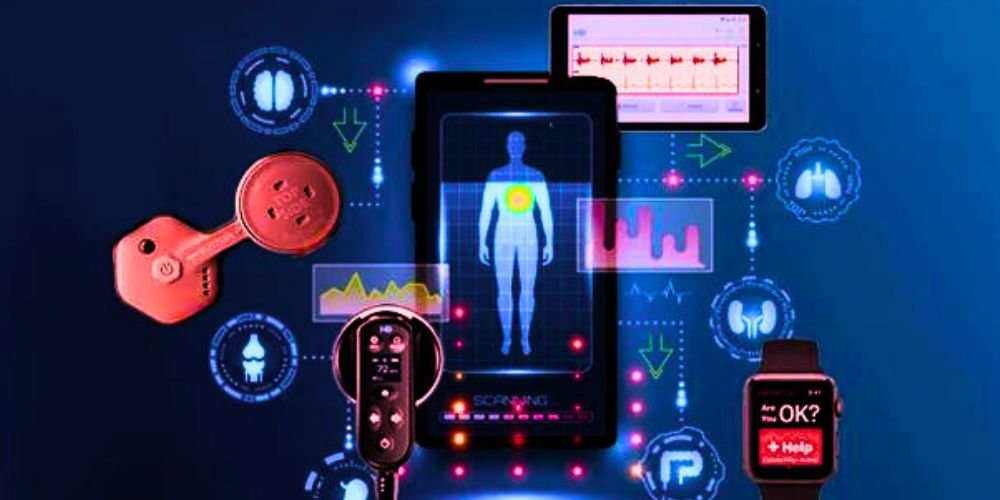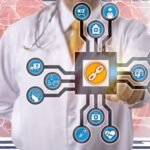In the digital age, connected health devices have emerged as transformative tools in the healthcare industry, reshaping how patients, providers, and systems interact and manage health. These devices, which include wearables, remote monitoring tools, and mobile health apps, enable continuous health monitoring, data collection, and real-time communication between patients and healthcare professionals. This article explores the evolution, applications, benefits, and future directions of connected health devices, highlighting their critical role in modern healthcare.
Understanding Connected Health Devices
Connected health devices, also known as the Internet of Medical Things (IoMT), are networked devices that collect and transmit health data to healthcare providers and systems. By providing timely and accurate health information, these devices facilitate remote monitoring, chronic disease management, and preventive care.
Historical Evolution
The concept of connected health devices dates back to the early 2000s, with the advent of telemedicine and remote patient monitoring. The development of wearable technology, such as fitness trackers and smartwatches, further accelerated the adoption of connected health devices. Advances in wireless communication, sensor technology, and data analytics have since propelled the evolution of these devices, making them more sophisticated and widely accessible.
Core Components
Connected health devices encompass several key components:
- Wearable Devices: Smartwatches, fitness trackers, and other wearable sensors that monitor physical activity, heart rate, sleep patterns, and other vital signs.
- Remote Monitoring Tools: Devices like glucometers, blood pressure monitors, and ECG monitors that track specific health metrics and transmit data to healthcare providers.
- Mobile Health Apps: These applications collect health data from wearables and remote monitoring tools, providing users and healthcare professionals with insights and alerts.
- Smart Home Health Devices: Connected scales, thermometers, and other home-based health tools that integrate with mobile apps and healthcare systems.
Applications and Impact of Connected Health Devices
Connected health devices have wide-ranging applications across various segments of the healthcare ecosystem, enhancing patient care and system efficiency:
Chronic Disease Management
Connected health devices are instrumental in managing chronic diseases such as diabetes, hypertension, and heart disease. Continuous monitoring and real-time data transmission enable healthcare providers to detect abnormalities early, adjust treatments promptly, and engage in proactive care, reducing hospitalizations and improving patient outcomes.
Preventive Care and Wellness
Wearable devices and health apps promote preventive care by encouraging healthy behaviors and giving users insights into their physical activity, nutrition, and sleep. These tools empower individuals to take control of their health, leading to better long-term wellness and reduced healthcare costs.
Remote Patient Monitoring
Remote monitoring tools enable patients to receive care in the comfort of their homes, reducing the need for frequent hospital visits. It is particularly beneficial for elderly patients and those with mobility issues. Remote monitoring also allows healthcare providers to manage larger patient populations efficiently, improving access to care.
Post-Acute Care and Rehabilitation
Connected health devices support post-acute care and rehabilitation by tracking patients’ recovery progress and adherence to treatment plans. Physical therapists and healthcare providers can monitor patients remotely, ensuring they follow prescribed exercises and therapies, leading to faster and more effective recovery.
Clinical Trials and Research
In clinical trials and research, connected health devices facilitate the collection of real-time, accurate data, enhancing the reliability of studies. Researchers can monitor participants’ health continuously, leading to more comprehensive insights and accelerating the development of new treatments and interventions.
Benefits of Connected Health Devices
Implementing connected health devices offers numerous benefits for patients, healthcare providers, and the overall healthcare system:
Improved Patient Outcomes
Continuous monitoring and real-time data transmission enable early detection of health issues, timely interventions, and personalized care plans, improving patient outcomes and quality of life.
Enhanced Patient Engagement
Connected health devices empower patients to actively participate in their health management actively, fostering a sense of ownership and responsibility. Increased patient engagement is associated with better adherence to treatment plans and healthier behaviors.
Cost Savings
By reducing hospital readmissions, emergency room visits, and unnecessary in-person consultations, connected health devices can lead to significant cost savings for healthcare systems and patients.
Efficient Resource Utilization
Remote monitoring and telehealth capabilities allow healthcare providers to manage larger patient populations more efficiently, optimizing resource utilization and reducing the burden on healthcare facilities.
Data-Driven Insights
The vast amounts of data collected by connected health devices provide valuable insights for healthcare providers. They enable data-driven decision-making and personalized care. This data also supports population health management and predictive analytics.
Challenges and Future Directions
Despite their potential, connected health devices face several challenges that need to be addressed to realize their benefits fully:
Data Privacy and Security
The collection and transmission of health data raise concerns about privacy and security. Ensuring robust cybersecurity measures and compliance with regulations like HIPAA (Health Insurance Portability and Accountability Act) is critical to protecting patient data.
Integration and Interoperability
Integrating connected health devices with existing healthcare systems and electronic health records (EHRs) remains challenging. Ensuring interoperability and standardization is essential for seamless data exchange and comprehensive patient care.
Technology Adoption
Widespread adoption of connected health devices requires addressing barriers such as digital literacy, cost, and access to technology, particularly in underserved populations.
Regulatory and Reimbursement Frameworks
Establishing clear regulatory and reimbursement frameworks is necessary to support the adoption and use of connected health devices in clinical practice. It includes developing guidelines for device approval, data use, and reimbursement policies.
Future Directions
The future of connected health devices holds exciting possibilities:
Artificial Intelligence and Machine Learning
Integrating AI and machine learning with connected health devices can enhance data analysis, predictive analytics, and personalized care. AI algorithms can identify patterns and provide actionable insights, improving patient outcomes and operational efficiency.
Advanced Sensors and Wearables
Developing advanced sensors and wearable technology will enable more accurate and comprehensive health monitoring. Innovations such as non-invasive glucose monitors and smart clothing will expand the range of health metrics that can be tracked.
Telehealth Integration
Connected health devices will continue integrating with telehealth platforms, enabling comprehensive virtual care. This integration will enhance remote consultations, chronic disease management, and post-acute care.
Global Health Initiatives
Connected health devices have the potential to support global health initiatives by providing accessible and affordable healthcare solutions in remote and underserved areas. Mobile health programs and community-based interventions can leverage these devices to improve health outcomes worldwide.
Conclusion
Connected health devices revolutionize healthcare by enabling continuous monitoring, personalized care, and data-driven decision-making. Their applications in chronic disease management, preventive care, remote monitoring, and clinical research are transforming patient care and healthcare delivery. While challenges remain, the future of connected health devices holds immense promise for improving health outcomes, enhancing patient engagement, and driving innovation in healthcare. As technology advances and adoption increases, connected health devices will continue to play a pivotal role in shaping the future of healthcare.










